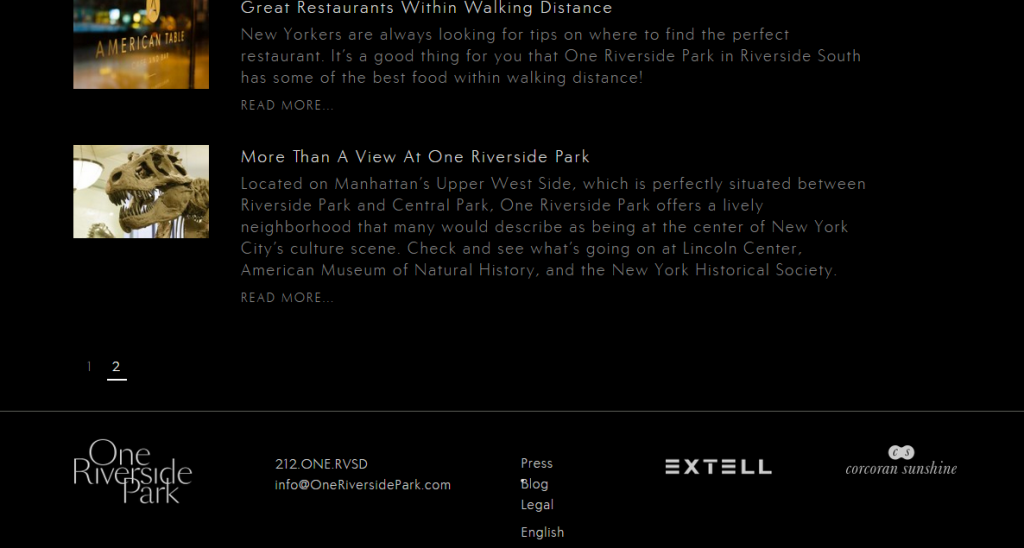
by Fronetics | Jul 8, 2015 | Blog, Content Marketing, Marketing, Social Media

By creating and distributing valuable and relevant content in a strategic and consistent manner you create demand for your products and services and drive profitable customer action. That being said, while content is king, content doesn’t go far (actually it goes nowhere) without distribution. For content to be successful for your business you need to do more than create content – you need to distribute content. Moreover, the content needs to be delivered consistently over time, at the right time, and in the right place.
Wise words by BuzzFeed’s Jonathan Perelman: “Content is king, but distribution is queen and she wears the pants.”
So how often should you distribute content via social media? While it is important to find the balance that is right for your business, here is what we have found to be effective and what we recommend:
12 to18 per day
Twitter
Business users should aim to tweet 12 to 18 times per day, not including replies and retweets. Twitter is likely the only social media network where it’s acceptable to push content out to followers with heavy frequency, but Twitter doesn’t filter users news feeds in the same way that Facebook does, so the lifespan of a tweet is only around 15 minutes. To get the most out of your content, try repurposing or repackaging it and publishing it multiple times a day. This strategy ensures your content goes farther and gains more exposure. Use social tools like HubSpot or Sprout Social to schedule posts at different times throughout the day as publishing content ahead of time frees up your time to respond and engage with users in real time.
1 time per day
Facebook
Companies generally find that posting 1 time per day is their sweet spot for most social media networks. Facebook’s algorithm determines what content is shown to each user, so it’s likely that your followers won’t see everything your business posts. Ensuring that your Facebook posts offer high quality content will work heavily in your favor as users who engage with your content are likely to see your posts with greater frequency. And your content lasts longer on Facebook; according to wisemetrics, a Facebook post reaches 75% of its potential engagement in 5 hours. A median tweet reaches this 75% mark in less than 3hrs. Be cognizant though of posting too frequently on this network; Social Bakers reviewed the Facebook posting habits of several large brands and found a correlation between increased posts (defined as more than 3 per day) and the loss of page likes.
Instagram
As with Facebook, businesses posting to Instagram should aim to publish content once per day. The caveat with Instagram is that posts shouldn’t exceed more than one per day. Unlike other wordy social networks like Facebook and Twitter, Instagram is the place for your company to convey its brand with images. A recent study by Forrester found that Instagram users were 58 times more likely to like, comment, or share a brand’s post than Facebook users and 120 times more likely than Twitter users. With more than 300 million active users, businesses that have found a way to leverage Instagram are boosting brand engagement and growing its customer base at an incredible rate, most with only one post per day.
LinkedIn
Because office workers not only take a break from their offices on weekends, but also from LinkedIn, companies should aim to post content once per day during the workweek. In fact, in a guide published by the social network itself, ideal posting frequency for businesses is 20 times per month. Beyond posts published by your company once per day, individual users from your business should be encouraged to engage frequently with peers in activities such as asking and answering questions with LinkedIn’s Group feature. To provide the most value for your LinkedIn followers, content should be less promotional, and more heavily focused on industry-wide trends and insight.
Google+
Companies tend to find that for Google+, once per day postings generate the most value. With the social network’s obvious search engine connection, user engagement on Google+ might not be as high as say, Twitter or LinkedIn, but there are anecdotal reports that maintaining active company profiles allows content to be indexed quicker on Google. Research shows five times as many people read a Google+ headline rather than the actual content, so spend some time crafting great headlines that succulently convey your company’s message.
At the end of the day, optimal posting frequency for your company rests heavily on the type of audience it wants to reach; experiment with different posting frequencies and let your own analysis be your guide. There’s a fine line between annoying your social followers and providing value. Maintaining a dynamic and fluid posting strategy will ensure that your social efforts drive followers to action, rather than drive them away.
Fronetics Strategic Advisors is a leading management consulting firm. Our firm works with companies to identify and execute strategies for growth and value creation.
Whether it is a wholesale food distributor seeking guidance on how to define and execute corporate strategy; a telematics firm needing high quality content on a consistent basis; a real estate firm looking for a marketing partner; or a supply chain firm in need of interim management, our clients rely on Fronetics to help them navigate through critical junctures, meet their toughest challenges, and take advantage of opportunities. We deliver high-impact results.
We advise and work with companies on their most critical issues and opportunities: strategy, marketing, organization, talent acquisition, performance management, and M&A support.
We have deep expertise and a proven track record in a broad range of industries including: supply chain, real estate, software, and logistics.


by Fronetics | Jul 7, 2015 | Blog, Marketing, Social Media, Strategy
With LinkedIn claiming the top spot for social networking professionals, there’s a good chance you already access the social network regularly. But what you might be missing on LinkedIn could be the key to unlocking more business opportunities.
Allow me to explain. There’s been a lot of talk about the impact social media is having on business sales. And for good reason – last year, the total amount of sales that could be tracked to social networks hit $3.30 billion, up 26% from 2013’s $2.62 billion. A growing number of companies are realizing there’s more opportunity than ever to use social platforms as lead generation and prospecting tools. When it comes to LinkedIn, reports suggest that users who command a deeper understanding of the social network’s capabilities reap far greater benefits than those that still view LinkedIn primarily as a job search tool.
One of LinkedIn’s best features for driving new business leads and opportunities is LinkedIn Groups. LinkedIn describes their Group feature as a “place for professionals in the same industry or with similar interests to share content, find answers, post and view jobs, make business contacts, and establish themselves as industry experts.” Essentially, it’s an online community where you can connect with industry peers and like-minded professionals (read: prospects and leads).
Never tried Groups before? Here’s a quick guide to get you up and running so you can start prospecting and finding leads today. As a prerequisite, you should already have an active LinkedIn account. If you don’t, start here.
Find Groups
To start, let’s take Groups out for a spin. From the homepage, navigate to the search bar at the top and click on the tab directly to the left on it. Drag down to “Groups”, then, type in a subject you’re interested in (e.g., marketing, sales, baking, etc.). You might notice that when you do a search, LinkedIn also provides suggestions not only on “Groups” but in several other categories such as “Connections,” “Companies,” “Features” and “Skills.” Once you’ve used your keyword to narrow your search, find a group that best matches what you’re looking for.
Cast a Wide Net
Once you’ve selected your group, join it. You may have to request membership approval if it is a private group. While there’s no limit to the amount of groups you can join, the sweet spot for lead generation is to join groups that are outside your industry or function that might help you grow your business. If you’re a small (and growing) 3PL, for example, don’t just industry groups, expand your network by joining groups for entrepreneurs and small business owners.
Commit to Building Your Network
Set aside some time each week to connect with five current or former business colleagues. LinkedIn makes it easy by providing suggestions based on your current connections and places of employment. More connections equal more opportunities for discussion about your company’s products and services.
Answer like a Pro
Use the Answers section within your groups as a place to showcase your expertise. Set a goal to answer at least two questions per week. After actively participating in a group for at least two weeks, start your own discussion within the group. Engaging industry peers in a rich dialogue is a great way to build trust and confidence among members of your new group. Turning your question and answering activity into leads is a long-term strategy, but one that can prove successful as people will begin to look at you as an expert and leader in your industry.
Practice Consistency
The key to generating leads via LinkedIn is consistency. Steady participation in your groups is the secret is to building relationships that will pay off in the end. Take some time to determine what’s working in your strategy and refocus your efforts as necessary, but always, always be consistent in your participation. In the end, it’s your activity that is going to set you apart from the competition and establish your expertise.
In a recent survey of sales professionals, most reported they were unfamiliar with LinkedIn’s full capabilities, but in the same survey, a little more than a third of respondents reported generating new business opportunities and revenue gains from their use of LinkedIn. It’s clear that the social network holds opportunity for those that recognize – and leverage – the network’s full capabilities.
Fronetics Strategic Advisors is a leading management consulting firm. Our firm works with companies to identify and execute strategies for growth and value creation.
Whether it is a wholesale food distributor seeking guidance on how to define and execute corporate strategy; a telematics firm needing high quality content on a consistent basis; a real estate firm looking for a marketing partner; or a supply chain firm in need of interim management, our clients rely on Fronetics to help them navigate through critical junctures, meet their toughest challenges, and take advantage of opportunities. We deliver high-impact results.
We advise and work with companies on their most critical issues and opportunities: strategy, marketing, organization, talent acquisition, performance management, and M&A support.
We have deep expertise and a proven track record in a broad range of industries including: supply chain, real estate, software, and logistics.


by Fronetics | Jul 6, 2015 | Big Data, Blog, Data/Analytics, Internet of Things, Logistics, Marketing, Strategy, Supply Chain

The battle for competitiveness in the cloud.
In this age of radical transformation for supply chains, top companies are tying together prevailing concepts, like big data and the Internet of Things (IoT), with cloud-based computing. Supply chains are being reimagined as digital networks that track not only physical goods, but also people, data, and money. As such, global technology giants continue to invest heavily in cloud computing.
The Chinese e-commerce company Alibaba Group Holding, Ltd. recently announced that it is launching its first international venture – a cloud computing hub in Silicon Valley, proving the fierce competition for market share is stiffening both globally and on the home turf. Notably, all five top-ranked companies listed by the 2013 Strategy & Global Information, Communications and Technology 50 study bet their future on cloud technologies. The companies (IBM, Microsoft, SAP, Oracle, and Cisco Systems) could not, until recently, be perceived as direct competitors, and now they all wield cloud-based portfolios as their competitive weapon of choice.
Analysts note:
The industry leaders are seeking dominant positions, wanting to become the kings of the cloud. As a group, they are putting distance between themselves and the second tier of followers.
For further proof data analytics is driving competition for cloud customers, we can look to a new report by Market & Research that shows data analytics and cloud computing are expected to record a combined growth of 26% annually over the next five years. The implication is that demand is hardly going to lessen as an increasing number of organizations need cloud solutions to manage and store the huge amounts of data that they use to transform manufacturing processes, fine-tune supply chains, forecast customer behavior, and optimize inventories – to name a fraction of potential applications.
And cloud-based computing is even moving the needle of interest in industries that seem inherently averse to making data and information more easily accessible. For example, concerns about data encryption, auditing controls, and transparency have stymied the adoption of cloud-based computing in the financial industry. According to a report by the Cloud Security Alliance, only 28% of American financial institutions have a cloud-based strategy in place, but as a sponsor of the report, Dr. Chenxi Wang, vice president of Cloud Security and Strategy at CipherCloud points out:
Cloud has made solid inroads in this industry with many firms looking to harnessing the power of cloud. There’s plenty of room for growth, particularly for providers who can fill the void for the auditing and data protection controls that are at the top of respondents’ cloud wish list.
Meanwhile, the public cloud services market alone could grow into a $100 billion industry by 2017, according to researcher IDC. Is your business prepared to leverage cloud computing for its supply chain activities? It’s coming, ready or not.
Fronetics Strategic Advisors is a leading management consulting firm. Our firm works with companies to identify and execute strategies for growth and value creation.
Whether it is a wholesale food distributor seeking guidance on how to define and execute corporate strategy; a telematics firm needing high quality content on a consistent basis; a real estate firm looking for a marketing partner; or a supply chain firm in need of interim management, our clients rely on Fronetics to help them navigate through critical junctures, meet their toughest challenges, and take advantage of opportunities. We deliver high-impact results.
We advise and work with companies on their most critical issues and opportunities: strategy, marketing, organization, talent acquisition, performance management, and M&A support.
We have deep expertise and a proven track record in a broad range of industries including: supply chain, real estate, software, and logistics.


by Fronetics | Jun 30, 2015 | Blog, Content Marketing, Current Events, Marketing

93 percent of all online experiences begin with a search engine and 75 percent of searchers don’t move past the first page of search results. With home buyers increasingly more likely to start their purchasing research online, content marketing is a strategic way for real estate marketers to get their properties in front of more potential buyers. What’s more, home buyers are influenced by peers and their interactions with websites, mobile apps, and social networks. The opportunities created by these online interactions can be competitive advantages for real estate marketers who are prepared to take advantage of this new landscape.
Consider this case study of a leading real estate marketing firm who chose to use digital and content marketing to shake up their traditional marketing approach. After just three months of beginning a digital and content marketing program, the firm recognized significant gains in web traffic, social media engagement, and brand exposure. The firm recognized that unlike print, online mediums created opportunities for their firm to present target audiences with dynamic content. Optimizing their content and strategizing about its distribution boosted sales 37% for this real estate marketing firm in just 90 days.
Download the case study to find out how they achieved their remarkable results.


by Fronetics | Jun 29, 2015 | Blog, Content Marketing, Marketing

In real estate sales, you want people to find your properties, like what they see, and ultimately be moved to purchase. In other words, you want to attract visitors, convert visitors to leads, and convert leads to deals. Innovative luxury real estate firms are finding ways to leverage digital tools to guide more buyers down that path to purchase.
Without a doubt, luxury real estate buyers are a diverse bunch. “One day I have to know all about feng shui, and the next I have to be able to talk to a pig farmer from Iowa,” says one luxury real estate sales executive. “I’m like a chameleon.” And luxury buyers are trending even more heterogeneous – both geographically and demographically. What’s more, they are more connected than ever before due to the proliferation of digital technologies that enable buyers and properties to connect with one another in new and different ways. It’s clear that technology is a strategic way for properties to get in front of more potential buyers; moreover, it creates competitive opportunities for luxury real estate firms that are prepared to adapt to this new landscape.
Many luxury real estate firms are already using digital and social media to carry the lifestyle brand they’ve built around their properties into the online world. With the use of inbound marketing – think of it as the intersection of valuable content, social media, and lead generation – they are creating new virtual “touch points” to connect with affluent, hyper-connected luxury buyers.
What we know about luxury buyers is that they are likely to do purchasing research online; they are influenced by peers and their interactions with websites, mobile apps, and social networks. We also know that 93 percent of all online experiences begin with a search engine, and that 75 percent of searchers don’t move past the first page of search results. Through publishing relevant, quality content, inbound marketing gives luxury real estate marketers the tools needed to make certain their properties are being found online.
According to Sprout Social’s Consumer Engagement Index, which ranks industries by which ones receive the most engagement from customers on social media, the real estate industry is second overall in terms of inbound engagement relative to audience size. But how exactly, are real estate firms using inbound marketing to sell luxury properties? The majority of real estate firms, through the use of social media and blogs, are seeking to draw visitors to a property’s website. Others are putting social media to use for functional purposes such as communicating real-time updates to potential buyers about project timelines or changes in sales office hours.
Of their recent inbound marketing efforts, the New York City-based Corcoran Real Estate Group says they have realized significant benefits. A spokesperson for the company says, “The main thing we’ve seen is that the quality of the referral traffic back into our main website has significantly improved. And not only are we seeing more traffic coming in, but visitors coming in from social media sites are staying longer and looking at more things — something we had also seen with search engines, but not in such large numbers.”
Corcoran isn’t alone in their use of emergent technology and social media strategy to ensure maximum exposure for their luxury properties. Long & Foster’s Luxury Homes e-magazine showcases luxury properties through an extensive online campaign targeting luxury clients. The online campaign drives traffic to the e-book and the website. Similarly, residential homebuilder Polygon Homes currently connects their available luxury properties to over 6,000 people through a multitude of social media platforms. The company’s social followers are linked to relevant articles, outside press coverage, and traditional marketing resources that serve to build on the lifestyle brand of each property.
Real estate firms are also recognizing value in blog content as way to attract visitors and nurture leads. For example, One Riverside Park, a newly-constructed New York City building with luxury condo units for sale, uses their blog to highlight not only their property, but also additional relevant information such as neighborhood amenities, seasonal local weather, and area restaurants.

Boston is experiencing a substantial upsurge in construction of high-end luxury residential units. The Boston Globe reports that “more than 8,000 luxury residential units are expected to be built in Boston during the next three years, doubling the supply of units built in large, luxury complexes since 1960.” And local real estate firms are using inbound marketing to sell those luxury units. Seventy percent of the luxury units at the 60-story Millennium Tower under construction in Boston’s Downtown Crossing neighborhood have been sold. Millennium Partners, the firm responsible for the marketing and sales of the luxury units, has embraced inbound marketing as part of their overall marketing strategy. The firm currently has over 13,500 likes from users on social media. Millennium Tower’s Facebook page not only shares construction progress, sales information, and related press coverage, but neighborhood amenities, industry trends, and an array of visual content that’s more often than not shared widely by followers.

Beyond increased prospect engagement and driving more traffic to their websites, other firms are using inbound marketing as a way to gauge market reception of traditional print marketing materials and the general perception of properties; knowing what resonates online through focus group-like participation is valuable information that marketers are finding bolster their offline marketing efforts. In that same vein, while real estate marketers are realizing value from creating and sharing content, they’re also recognizing the importance of analytics and measurement.
Real estate marketers are using inbound marketing metrics to determine what type of content is inspiring current customers and pulling in new leads. These firms are looking at how their online numbers compare daily, weekly, and monthly and planning content accordingly. Specifically, they’re monitoring measurements like page views, video views, document views, content downloads, and social conversations. They’re examining how sales are impacted by social media and digital content by tracking metrics such as referrals from Facebook, Twitter, Pinterest. Knowing all of these metrics allows for a more nimble real estate marketing strategy– one that’s able to rapidly adapt and engage potential buyers in real-time.
Inbound marketing is a new approach to an old strategy – one that’s putting real estate marketers in charge of the way potential buyers interact with their properties. These marketers are guiding prospects down the road of purchase through lead generation campaigns – capturing emails and other contact information through blog subscriptions and form completions for content downloads. They’re strengthening branding efforts for their properties by building robust online social communities and employing previously untapped sources of referrals. Real estate marketers who use inbound marketing are seeing their properties rank higher in search engine results pages, experiencing a steady increase in their website visitors, and increasing conversion rates of leads and sales. Taking into consideration the changing demographics and increased digital connectedness of luxury real estate buyers, firms that seek to broaden the reach of their marketing efforts through new and emergent technologies will aggressively position themselves as strong competitors in an increasingly competitive luxury property market.


by Fronetics | Jun 25, 2015 | Big Data, Blog, Data/Analytics, Internet of Things, Marketing

From coffee makers to urban design, the Internet of Things (IoT) is affecting change in virtually all aspects of daily life. And even though the IoT is still at the early-adopter stage, in just five years 50 billion devices are projected to be connected to the Internet, generating an estimated $2 trillion to $14 trillion in value. Expectations are running high, so high, in fact, that Gartner ranked IoT at the top of its 2014 Hype Cycle for Emerging Technologies.
Companies are naturally eager to get a piece of the action with as many as three out of four exploring how IoT technologies could fit into their business operations. Too many times, however, companies end up with mountains of data and no actionable information. Entry into the IoT should come with warnings: analyze the data or prepare to be disappointed. Or, data without analytics is nothing but noise.
But unless businesses turn the focus away from pure data collection to data analysis, investments in IoT technologies are doomed to produce disappointing results. To be truly useful, the data should do more than “look pretty on a dashboard,” as Steven Sarracino, founder of Activant Capital Group, LLC, in Greenwich, Conn., pointed out.
Vendors of sensor technologies would simultaneously be wise to take their services beyond singing the virtues of amassing data to showing their clients how to make sensor-driven decisions. In fact, the need for more guidance was underscored in a fleet report by Tracking Automotive Technology: TU Automotive (previously Telematics Update). Vendors should, according to the report, present the data in a digestible format to assist overwhelmed end-users. While purely monitoring the performance of a forklift, for example, provides value, it is not until the data is analyzed and acted upon that maximum ROI is achieved. In the case of a forklift fleet, it might entail optimizing routes in the warehouse or performing preventive maintenance. As another example, the retail sector can apply analytics to data collected by security cameras and Wi-Fi beacons to help retailers understand what types of displays catch customers’ attention.
The adoption of IoT technologies will likely come easier to industries such as manufacturing and supply chain which already connect machinery and fleets with Internet-enabled sensors or devices. Smart grid technologies also hold a lot of promise for public utilities based on current industry trends, connecting countless data points for continuous monitoring and proactive management of the power supply. However, until companies are able to adequately apply analytics to squeeze value out of their investments, it may be a while before IoT technologies reach critical mass.













